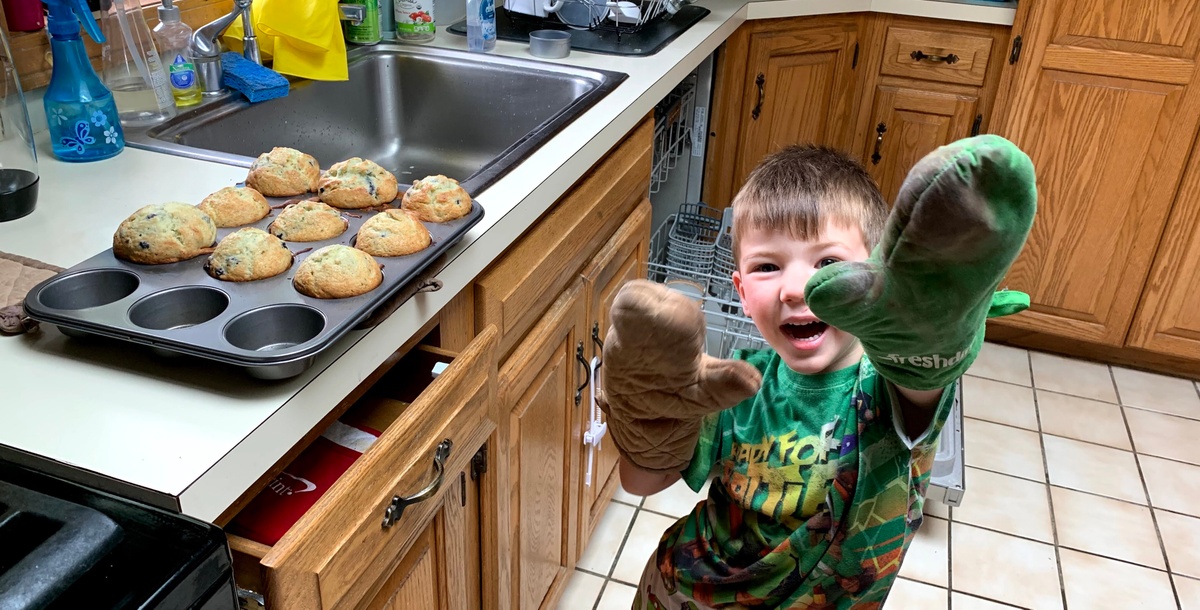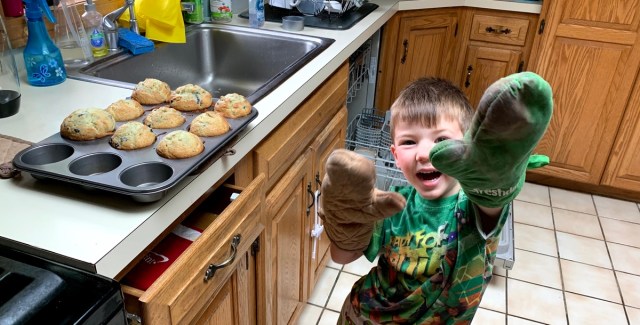
When I became principal of a second and third-grade elementary school, each grade had just 22 minutes—start to finish—for lunch. What was the result? Rushed eating. Food waste. Frequent friction between kids and lunch aides. General mayhem.
Then, while traveling in Japan, I visited a school in which the students served lunch to one another, teachers ate with students and everyone took their time. I watched how thoughtfully kids ate. I listened and, without understanding a word, I could tell that lunchtime was an essential part of their social learning.
Once COVID hit, lunch was at home and oddly enough, my husband and I left the kids alone at lunchtime. We figured the mid-day meal could hold their attention, and we could “get through” our work faster and have more family time in the evenings.
But, this summer, I remembered my experience in Japan. I also recalled an article I’d read in The Atlantic entitled, The Importance of Eating Together, which lays out all that we gain from eating with other people—not simply alongside other people but truly sharing the full experience with them. I read more about how eating meals with children leads to healthier eating habits and improved social skills. Studies continue to link eating meals as a family to better outcomes for kids in school and life, including markers like higher grade-point averages, resilience, and self-esteem. As kids age, the research becomes compelling, linking family meals to reduced rates of substance abuse, eating disorders, and depression.
Easy Win—Teach Meals!
The more I thought about it the more I was convinced my family was missing a valuable opportunity to teach, and to bond, every day. So we changed that. I set aside 30 minutes for “Family Lunch” in my work Google calendar each day, and my husband and I started eating with the kids again. Most mornings, we still make lunches ahead of time, but we sit together. At a real table. We talk. We laugh. We break bread together.
How Lunch Has Impacted the Kids
All three of our kids eat a more balanced meal now that we eat together. They help set up and clean up—routines that really slid when they ate on their own. They also share what they’re thinking about, and we have the chance to laugh together—a gift that helps keep us going through the day.
Adding in daily lunch has also helped our kids practice patience. Now, when they come to see us when we are working, we can ask things like, “Could you put that (creation you made) on the kitchen table so we can look at it together during lunch?” or “Can we talk about that at lunch? Best of all, now that they know lunch is coming—they can count on it and, most times, they can wait for it. Remarkably, the interruptions have dropped by more than half.
How Lunch Has Impacted Us
We’re so pleased by how the kids have responded, but the truth is that my husband and I may have benefitted the most. We eat better and more consistently each day, experiencing more steady energy and less stress.
An established lunchtime has also helped me better deal with the challenge of multi-tasking. Like many parents, I’ve struggled badly with working from home and simultaneously being a mom. I used to draw such bright lines—work was at the office and home was all about parenting. Quarantine blurred those lines, and I haven’t felt good enough at either job since. Adding a lunch break has given me a mid-day chance to hop in my phone booth and be supermom again—even if just for 30 minutes.
Easy Ways to Put Meals on Your Syllabus This Fall
Whether your kids are learning from home, heading back to in-person school settings, or a combination, here are several, different ways to work eating together into your daily plan:
- Lean into breakfast: Read more about why mornings can be truly magical for kids and, if you can, make sure your team sits together for breakfast.
- Plan an afternoon snack or “tea time:” If you’re all home in the afternoons, make a snack for two. In our culture, snack can often become quite transient and transactional, and kids can snack too frequently as a result. But, snack time can be another wonderful chance to teach kids how to slow down and connect with other people, so take the opportunity if you can.
- Make dinner a time for discussion: The last meal of the day provides a chance to teach kids how to process their day and their feelings. When we have dinner, we use a ritual called “roses, thorns, and buds.” Each person takes a turn sharing one rose (a highlight), thorn (something challenging), and bud (something they look forward to) from the day.
- Or focus on dessert: Kids may need to eat earlier than adults, so if a family dinner isn’t in the cards, make time to sit and savor a post-dinner treat with kids before their bedtime. Dinner isn’t necessarily the important part—what matters is the time to connect before the day is done.
- Take advantage of Saturday and Sunday dinners: Even if most days of the week are harried, you can pick one day to plan, prepare, and enjoy a meal together. If kids are old enough, task them with researching meals in books, online, or by reaching out to family and friends. Use the process to introduce the foods, songs, and stories that are a special part of your family’s history and celebrate the values you hold dearest. These kinds of discussions will help nurture children’s sense of belonging.
And, if you do it each week, kids get the consistent benefit of learning how to eat with others and how to connect socially. Kids can also count on this ritual to reduce their anxiety and give them something to look forward to each week, no matter what’s happening around them. That may be the best gift of all this Fall.
